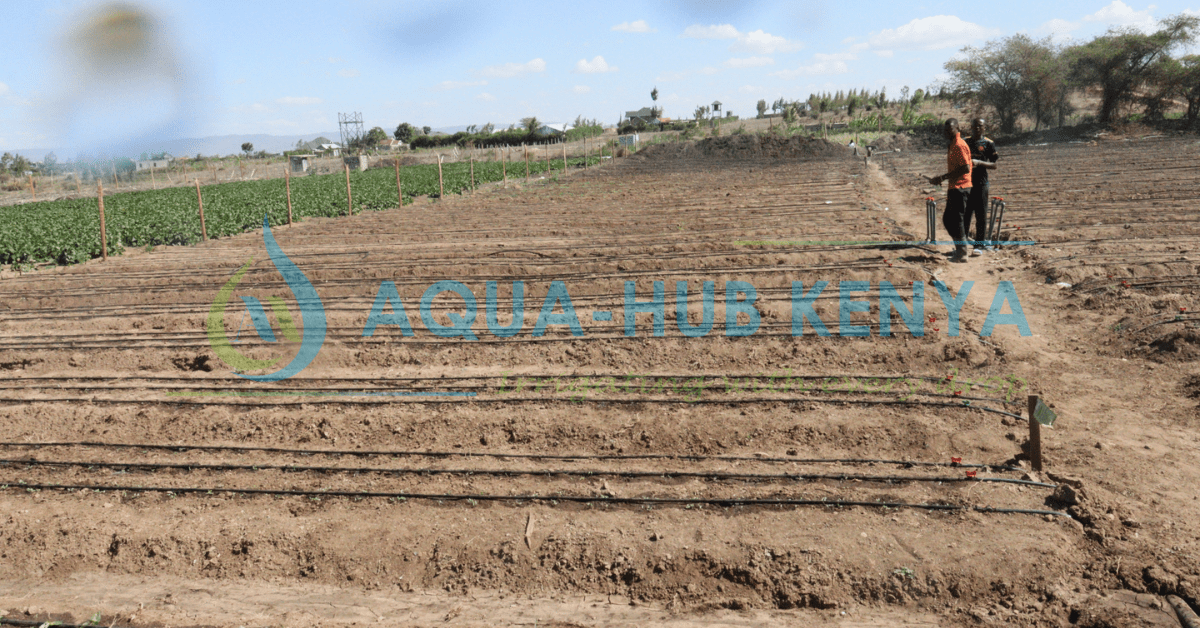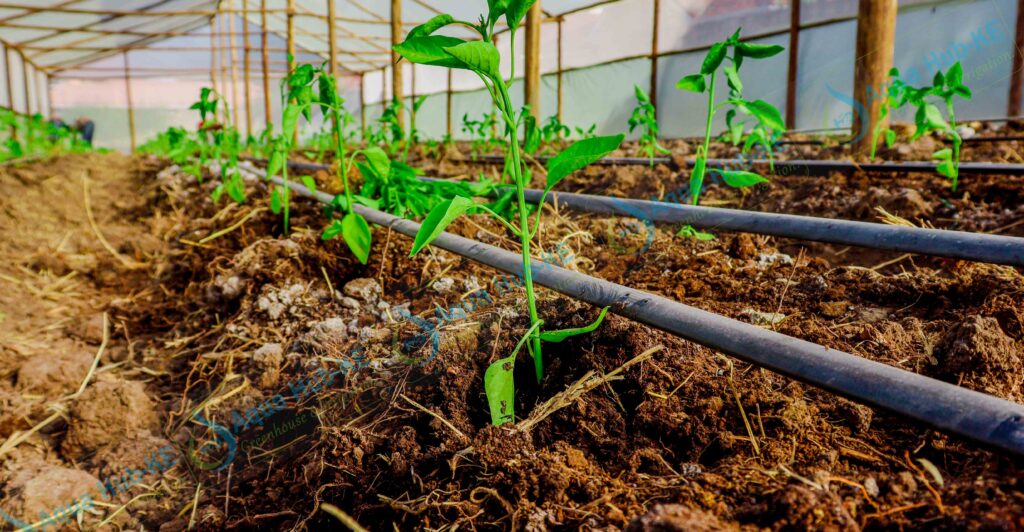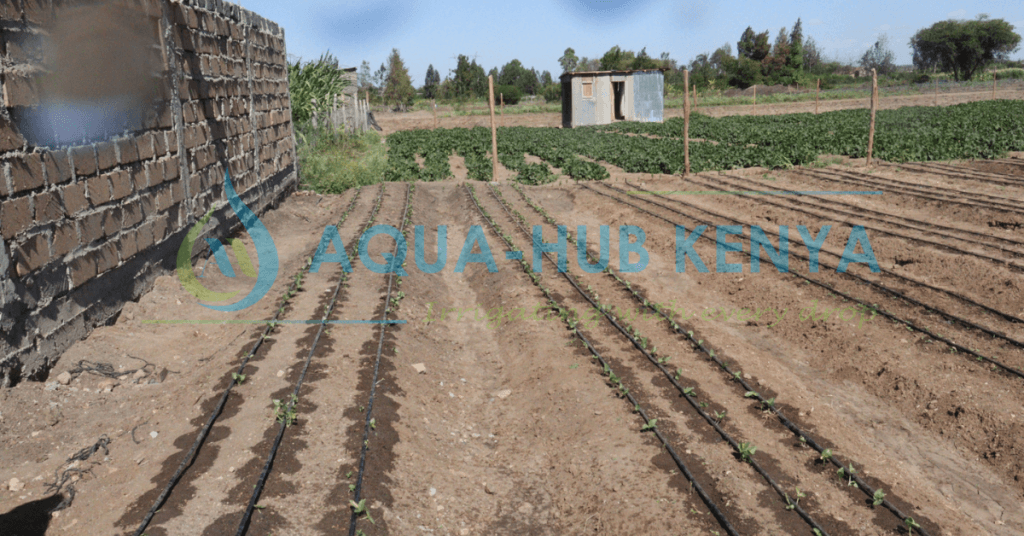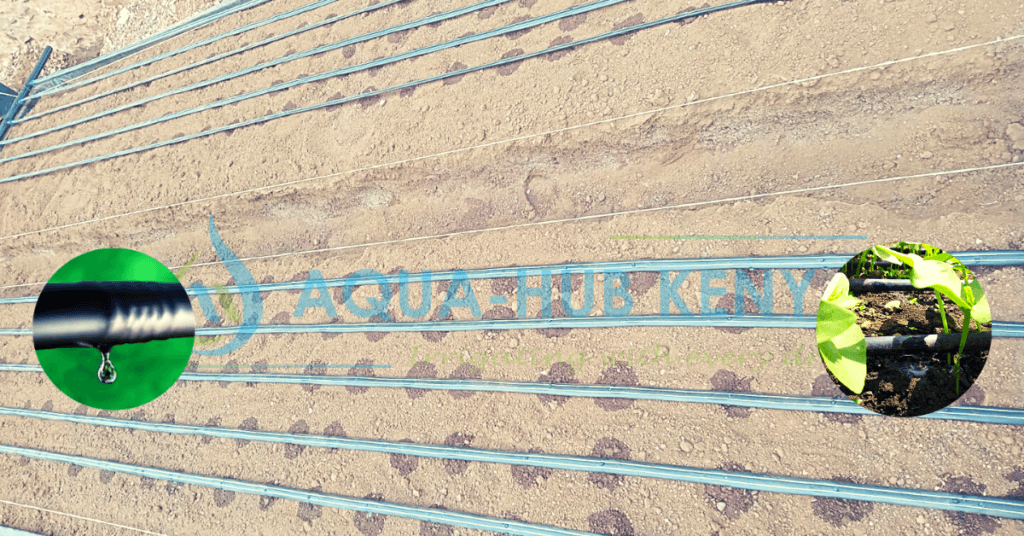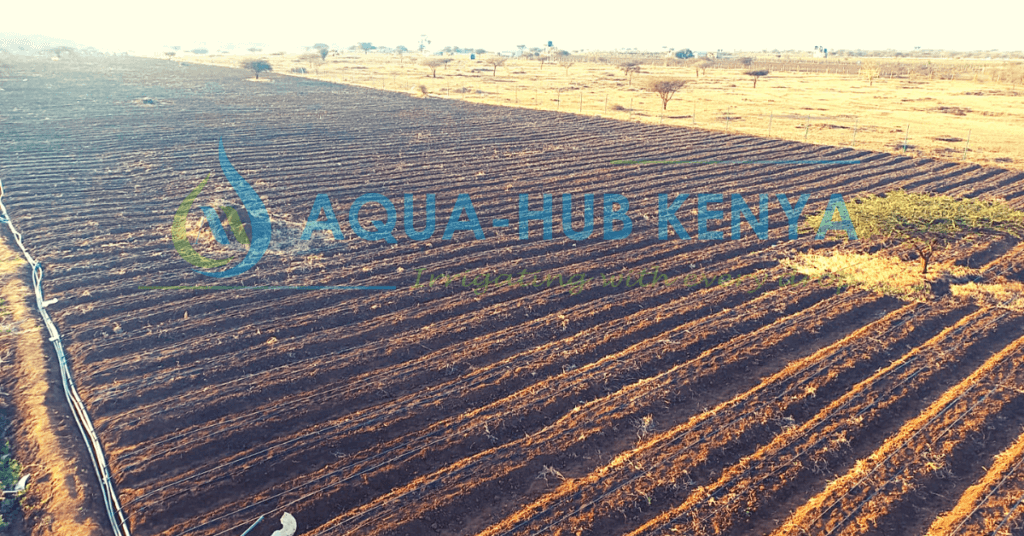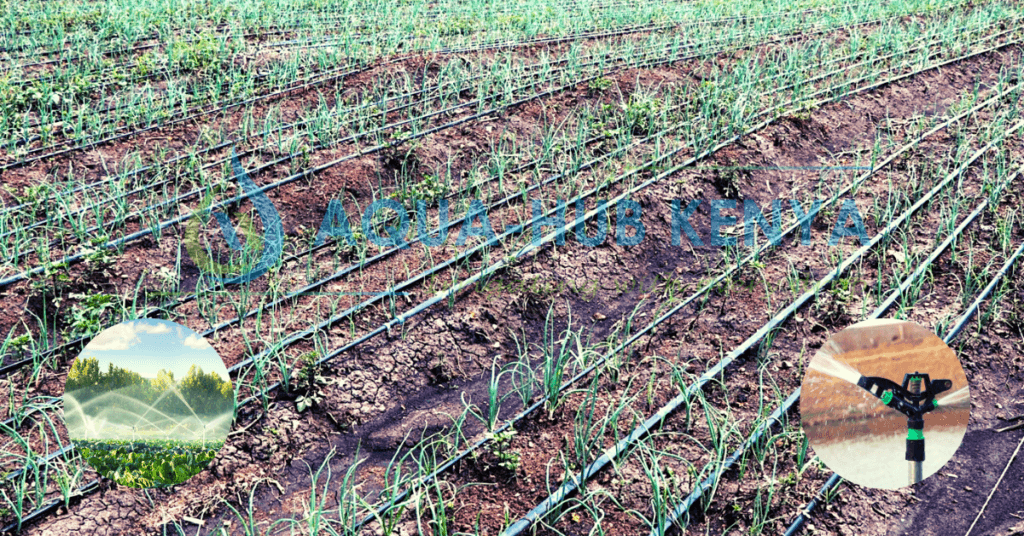In Kenya, drip irrigation has been utilized by a number of farms. They have done this as a result of realizing the great efficacy of this irrigation method. The method helps farmers increase produce while also saving water. Although boosting crop output by more than 30%, it consumes 30 to 50% less water than spray irrigation. It might also save you time and avoid mistakes with fruits and veggies. This irrigation is used in farms, commercial greenhouses, and backyard gardening. Especially for crops and plants like containerized landscape trees, tomatoes, grapes, bananas, eggplant, citrus, strawberries, and sugarcane, It is also frequently utilized in areas with severe water shortages.
What is drip irrigation?
Drip irrigation delivers water directly to the plant’s roots, drop by drop, through a network of pipes, tubes, or hoses. In a drip system, water is applied at a low rate and low volume, minimizing water wastage and ensuring that the plants receive a consistent water supply. The system is also designed to deliver water slowly and precisely to the soil surface or directly to the plant roots, minimizing evaporation and runoff.
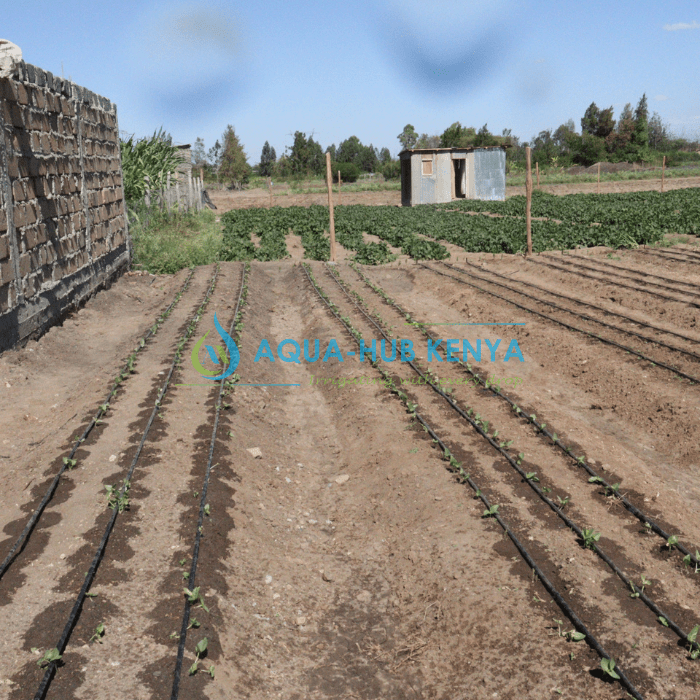
It is beneficial for areas where water is scarce or where water resources are limited. This type of irrigation system is commonly used in agriculture, greenhouses, and residential landscaping to conserve water, reduce water costs, and increase crop yield. Drip irrigation systems can also be automated and controlled by a timer or sensor, making it easier to manage water use and optimize plant growth. Overall, the irrigation is also a highly efficient and effective method of watering plants, providing a precise amount of water where and when it is needed.
What are the benefits of drip irrigation?
- Water is exploited to its full potential.
- Fertilizer/nutrient loss is decreased when water is applied locally and leaching is reduced.
- Weeds cannot absorb water since there is no water accessible to them, thus they grow in smaller numbers.
- Agricultural output is at its peak.
- Fertilizers may also be utilized very efficiently.
- Low operational costs.
- There is no soil erosion.
- The capability of soil infiltration is boosted.
- Fertilizers and groundwater are not compatible.
- Seed germination is enhanced.
- We can also safely utilize recycled water.
- The fields do not need to be leveled.
- Water may also be irrigated on irregularly shaped areas.
- Fertilizer waste is cut in half.
- Because it operates at a lower pressure than conventional watering technologies, it also saves energy.
What are the components of drip irrigation?
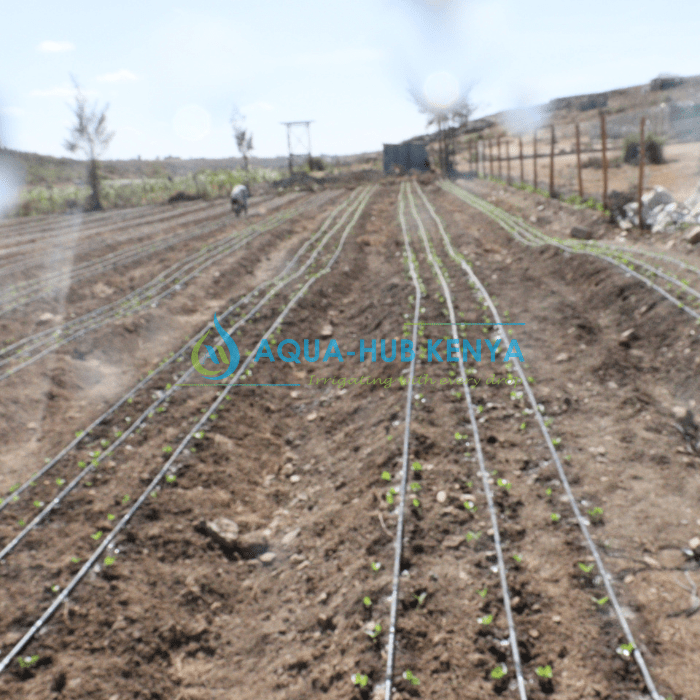
- Water supply source (e.g. tank, pump, or faucet)
- Pressure regulator
- Backflow preventer
- Filter
- Mainline pipe
- Submain pipe
- Drip tubes or drip lines
- Fittings (e.g. elbows, tees, connectors)
- Emitters (e.g. drippers, micro-sprays, bubblers)
- Stakes and/or clamps to secure drip tubes in place
- End cap to seal off the drip system
How efficient is drip irrigation?
- Drip irrigation is highly efficient in terms of water usage and delivery.
- It delivers water directly to the roots of plants, reducing water waste and runoff.
- It also helps reduce weed growth and soil erosion.
- Drip irrigation is also easily managed and requires minimal maintenance.
What are the ideal crops for drip irrigation?
- Tomatoes
- Peppers
- Onions
- Carrots
- Cucumbers
- Lettuce
- Melons
- Squash
- Eggplant
- Strawberries

